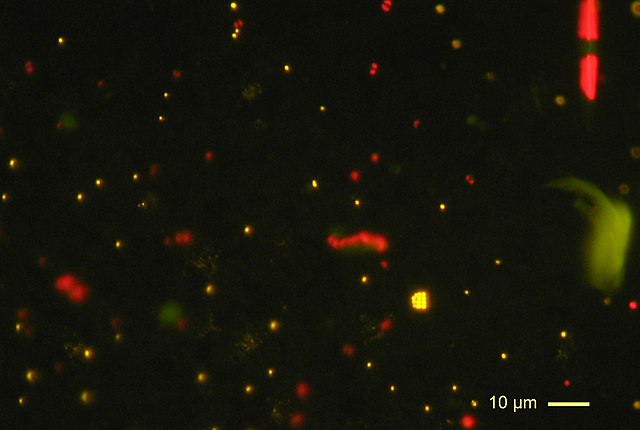A fluorometer, fluorimeter or fluormeter is a device used to measure parameters of visible spectrum fluorescence: its intensity and wavelength distribution of emission spectrum after excitation by a certain spectrum of light. These parameters are used to identify the presence and the amount of specific molecules in a medium. Modern fluorometers are capable of detecting fluorescent molecule concentrations as low as 1 part per trillion.
Fluorometer designed to measure chlorophyll fluorescence in plants
Photosynthetic phytoplankton from the Pacific Ocean observed using epifluorescence microscopy (blue exciting light).
Filter after a water sample has been filtered through it to isolate the phytoplankton on the filter before benchtop chlorophyll fluorometry.
Fluorescence is one of two kinds of emission of light by a substance that has absorbed light or other electromagnetic radiation. Fluorescence involves no change in electron spin multiplicity and generally it immediately follows absorption; phosphorescence involves spin change and is delayed. Thus fluorescent materials generally cease to glow nearly immediately when the radiation source stops, while phosphorescent materials, which continue to emit light for some time after.
Fluorescent minerals emit visible light when exposed to ultraviolet.
Fluorescent marine organisms
Fluorescent clothes used in black light theater production, Prague
A cup made from the wood of the narra tree (Pterocarpus indicus) beside a flask containing its fluorescent solution Lignum nephriticum.







